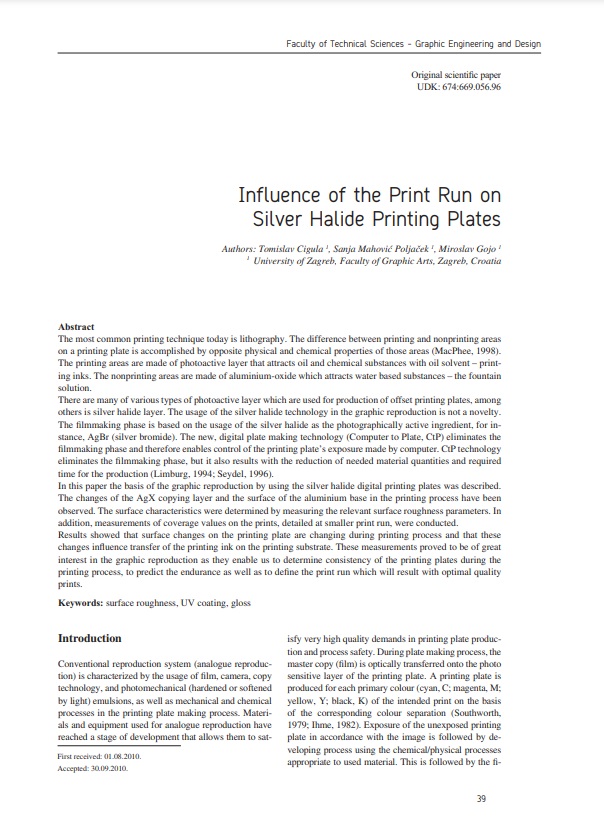
Published 2023-10-01
abstract views: 191 // Full text article (PDF): 163
Keywords
- surface roughness,
- UV coating,
- gloss
How to Cite
Copyright (c) 2010 © 2010 Authors. Published by the University of Novi Sad, Faculty of Technical Sciences, Department of Graphic Engineering and Design. This article is an open access article distributed under the terms and conditions of the Creative Commons Attribution license 3.0 Serbia.

This work is licensed under a Creative Commons Attribution 3.0 Unported License.
Abstract
-
The most common printing technique today is lithography. The difference between printing and nonprinting areas on a printing plate is accomplished by opposite physical and chemical properties of those areas (MacPhee, 1998). The printing areas are made of photoactive layer that attracts oil and chemical substances with oil solvent – printing inks. The nonprinting areas are made of aluminium-oxide which attracts water based substances – the fountain solution. There are many of various types of photoactive layer which are used for production of offset printing plates, among others is silver halide layer. The usage of the silver halide technology in the graphic reproduction is not a novelty. The filmmaking phase is based on the usage of the silver halide as the photographically active ingredient, for instance, AgBr (silver bromide). The new, digital plate making technology (Computer to Plate, CtP) eliminates the filmmaking phase and therefore enables control of the printing plate’s exposure made by computer. CtP technology eliminates the filmmaking phase, but it also results with the reduction of needed material quantities and required time for the production (Limburg, 1994; Seydel, 1996). In this paper the basis of the graphic reproduction by using the silver halide digital printing plates was described. The changes of the AgX copying layer and the surface of the aluminium base in the printing process have been observed. The surface characteristics were determined by measuring the relevant surface roughness parameters. In addition, measurements of coverage values on the prints, detailed at smaller print run, were conducted. Results showed that surface changes on the printing plate are changing during printing process and that these changes influence transfer of the printing ink on the printing substrate. These measurements proved to be of great interest in the graphic reproduction as they enable us to determine consistency of the printing plates during the printing process, to predict the endurance as well as to define the print run which will result with optimal quality prints.

